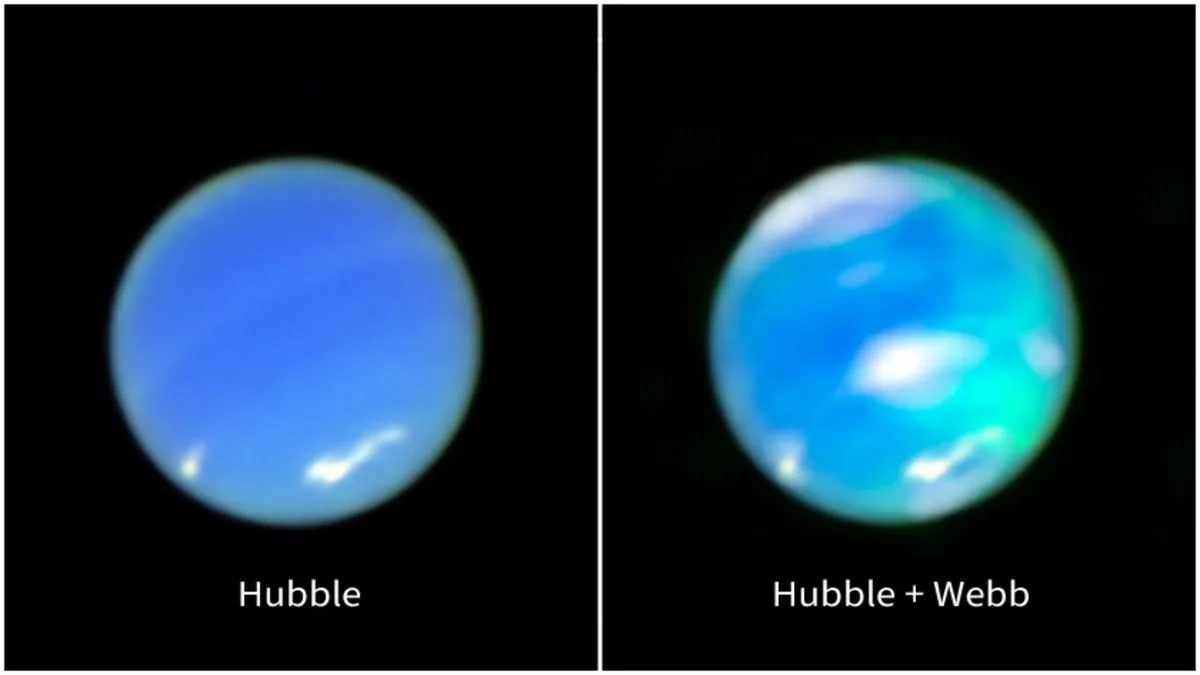
In a monumental achievement, astronomers have successfully captured direct images of Neptune's auroras, marking a significant milestone in our understanding of this distant ice giant. For decades, scientists have speculated about the existence of these shimmering light displays, relying on fleeting data from the Voyager 2 probe and observations of similar phenomena on other planets like Jupiter, Saturn, and Uranus. However, capturing clear images of Neptune's auroras remained elusive until the James Webb Space Telescope (JWST) directed its powerful instruments toward the icy planet.
According to Henrik Melin of Northumbria University, who conducted the research while at the University of Leicester, the remarkable clarity and detail of the auroras were astonishing. “It was so stunning to not just see the auroras, but the detail and clarity of the signature really shocked me,” Melin stated, highlighting the significance of this discovery. The unique nature of Neptune's auroras is particularly intriguing, as they differ from those observed on Earth and other gas giants. On planets like Jupiter and Saturn, auroras are typically confined to the poles due to their relatively well-aligned magnetic fields. In contrast, Neptune's highly tilted and offset magnetic field allows its auroras to appear at unexpected latitudes, including mid-latitudes.
The groundbreaking observations were made possible by the Near-Infrared Spectrograph (NIRSpec) aboard the James Webb Space Telescope. This advanced instrument analyzes the light emitted or absorbed by celestial bodies, allowing scientists to break down various wavelengths of light. By doing so, they can deduce critical physical properties such as temperature, mass, and chemical composition. In this instance, NIRSpec captured detailed images of Neptune's ionosphere—the electrically charged layer of its upper atmosphere, akin to Earth's ionosphere, where auroras typically form.
Webb's observations also unveiled emissions of the trihydrogen cation (H₃⁺), one of the universe's most abundant ions. This finding is particularly important, as H₃⁺ plays a pivotal role in the formation of planetary auroras, glowing in response to interactions between a planet's atmosphere and charged particles from the solar wind. “H₃⁺ has been a clear signifier on all gas giants—Jupiter, Saturn, and Uranus—of auroral activity. We expected to see the same on Neptune, and with Webb, we finally got that confirmation,” explained JWST scientist Heidi Hammel.
The team also managed to take a temperature reading of Neptune, a measurement that hasn't been accomplished since Voyager 2's flyby in August 1989. The results were astonishing; Melin noted that Neptune's upper atmosphere has cooled by several hundred degrees since that time, with temperatures in 2023 being just over half of what they were in 1989. This significant drop in temperature may help explain why the auroras on Neptune have been so difficult to observe. Auroras occur when charged particles excite atmospheric gases, causing them to emit light. Consequently, lower temperatures typically lead to fewer energetic particles and decreased collision rates, resulting in dimmer auroras that are more challenging to detect.
As astronomers continue to study Neptune with the James Webb Space Telescope, they aim to deepen their understanding of our solar system's most enigmatic planet. “As we look ahead and dream of future missions to Uranus and Neptune, we now recognize how crucial it will be to have instruments tuned to infrared light wavelengths to further investigate the auroras,” added Leigh Fletcher of Leicester University, co-author of the study. This pioneering observatory has finally opened a window onto the previously hidden ionosphere of the giant planets, paving the way for future discoveries.